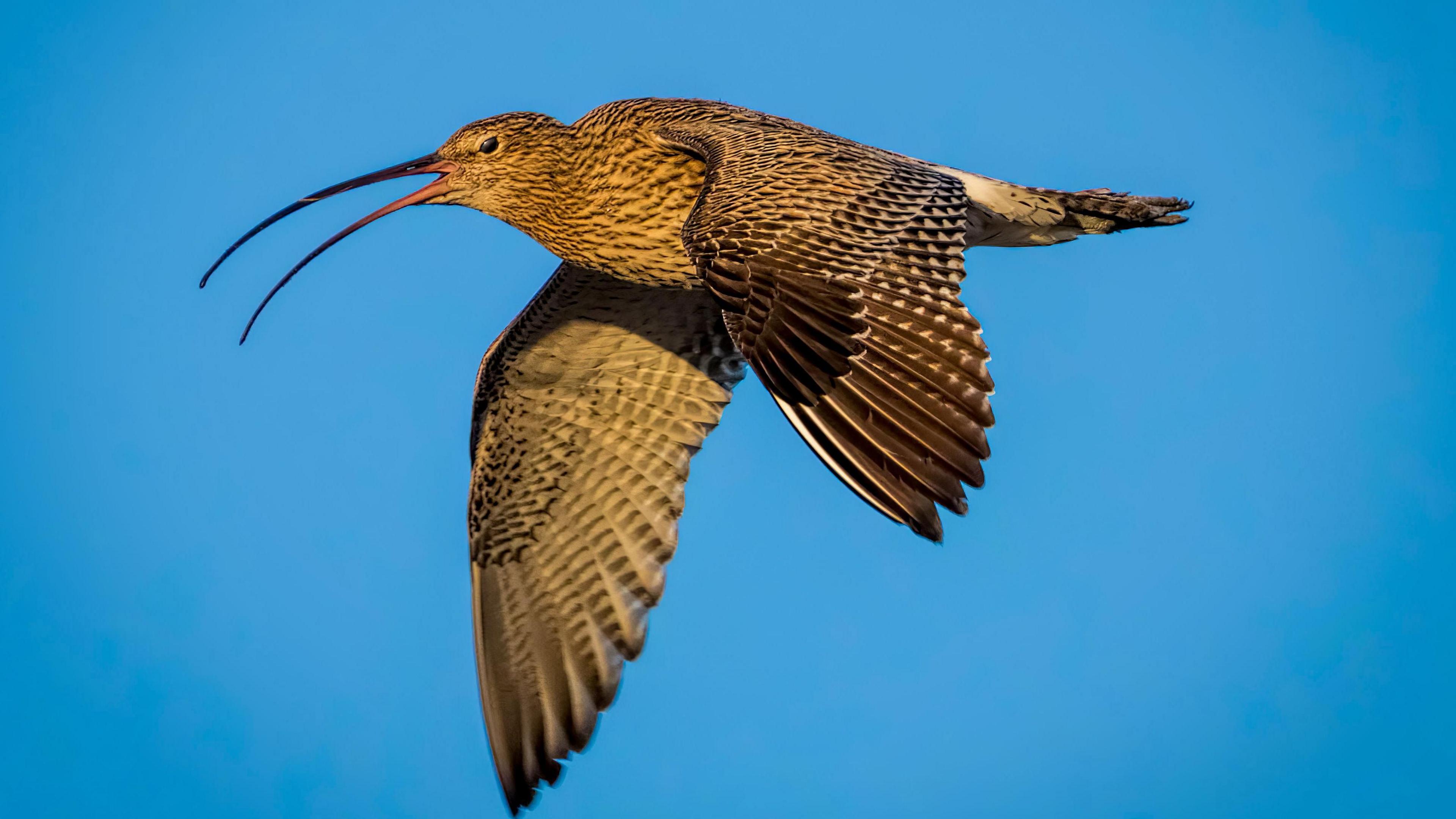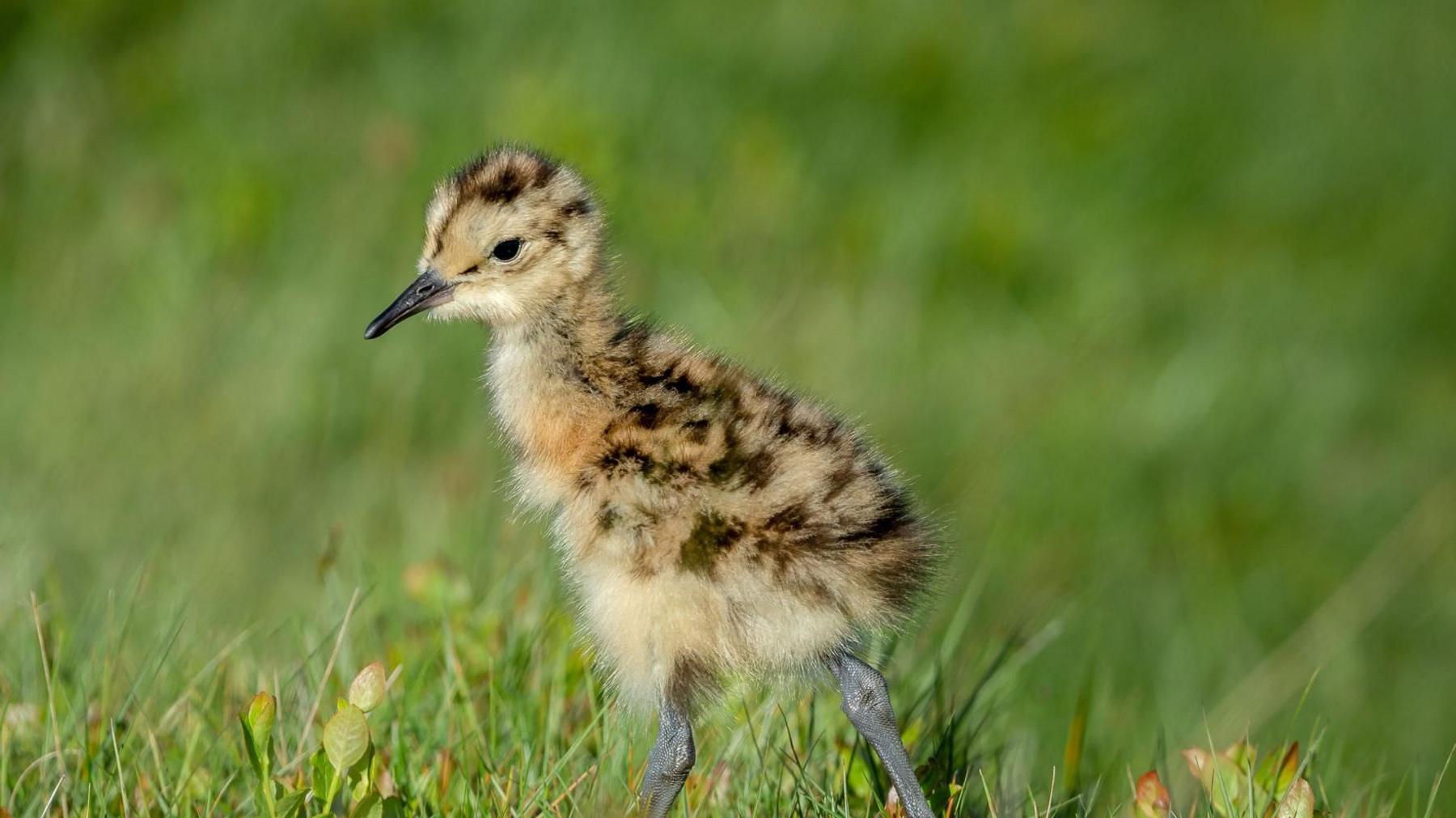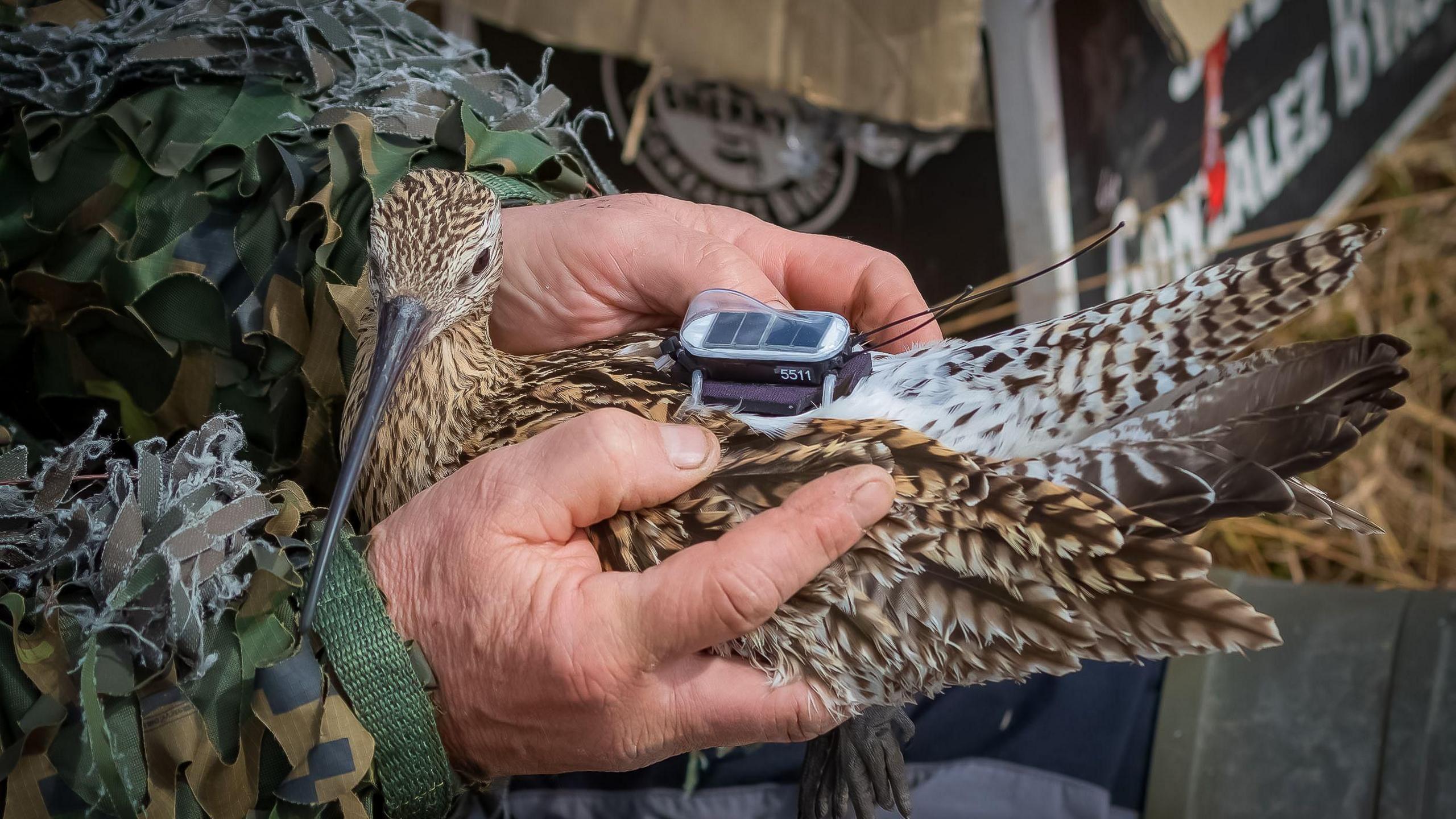How technology is helping to protect Wales' most endangered bird

The Eurasian curlew is Wales' most threatened bird species
- Published
Researchers have been using drone technology to help protect Wales' most endangered bird from extinction.
The Eurasian curlew is one of the biggest wading birds in Europe, and can be found near bogs and moors in the UK.
It is best known for its long legs and curved beak, which it uses to sift through mud to find worms and shrimp to eat.
Since 1993 Wales has lost around 90% of its curlew population, and in 2015 the birds were moved to the red category (the highest category) on the UK Conservation Status Report, meaning the species needs urgent care to protect it from extinction.
How much do you know about garden birds?
- Published12 April 2024
Are bright lights shrinking the eyes of our city birds?
- Published29 September 2023
Fancy building your own bird feeder?
- Published23 June 2020
Why are curlew at risk?

Curlew chicks are at risk from predators like foxes and crows
Some of the biggest threats to curlew include habitat loss, farming practices and predators.
There are thought to be around 400 to 1,700 breeding pairs left in the wild in Wales, with populations decreasing by around 6% every year.
"If we don't start doing it now, it's going to be too late," said Tony Cross, an ornithologist (a scientist who specialises in studying birds) who is working with Natural Resources Wales (NRW) on a curlew recovery plan.
The loss of their natural habitat in the wild, means that curlews are choosing to nest in farmers' hayfields, where they are at risk of being destroyed if the grass is mown in May or June.
Now farmers, researchers and the government are teaming up to try to figure out the best way to help the birds.
What is being done to help the curlews?

This curlew is having a solar-powered GPS "backpack" fitted - which transmits a bird's location over several years
One thing that is really helping conservationists and farmers is technology.
An advancement in GPS tracking devices, which are now small enough to be strapped to curlews using a tiny backpack, has meant that researchers can keep track of their location better.
Thermal imaging drones have also been used to show where they are nesting in tall grass, as the bird's warm body temperature shows up in bright colours on pictures.
Conservationists hope these can then be used by farmers to help figure out if it is safe to mow their grass, so that they don't disturb the curlew's nests.
Electric fencing has also been used to try to protect curlew chicks from foxes and crows.
